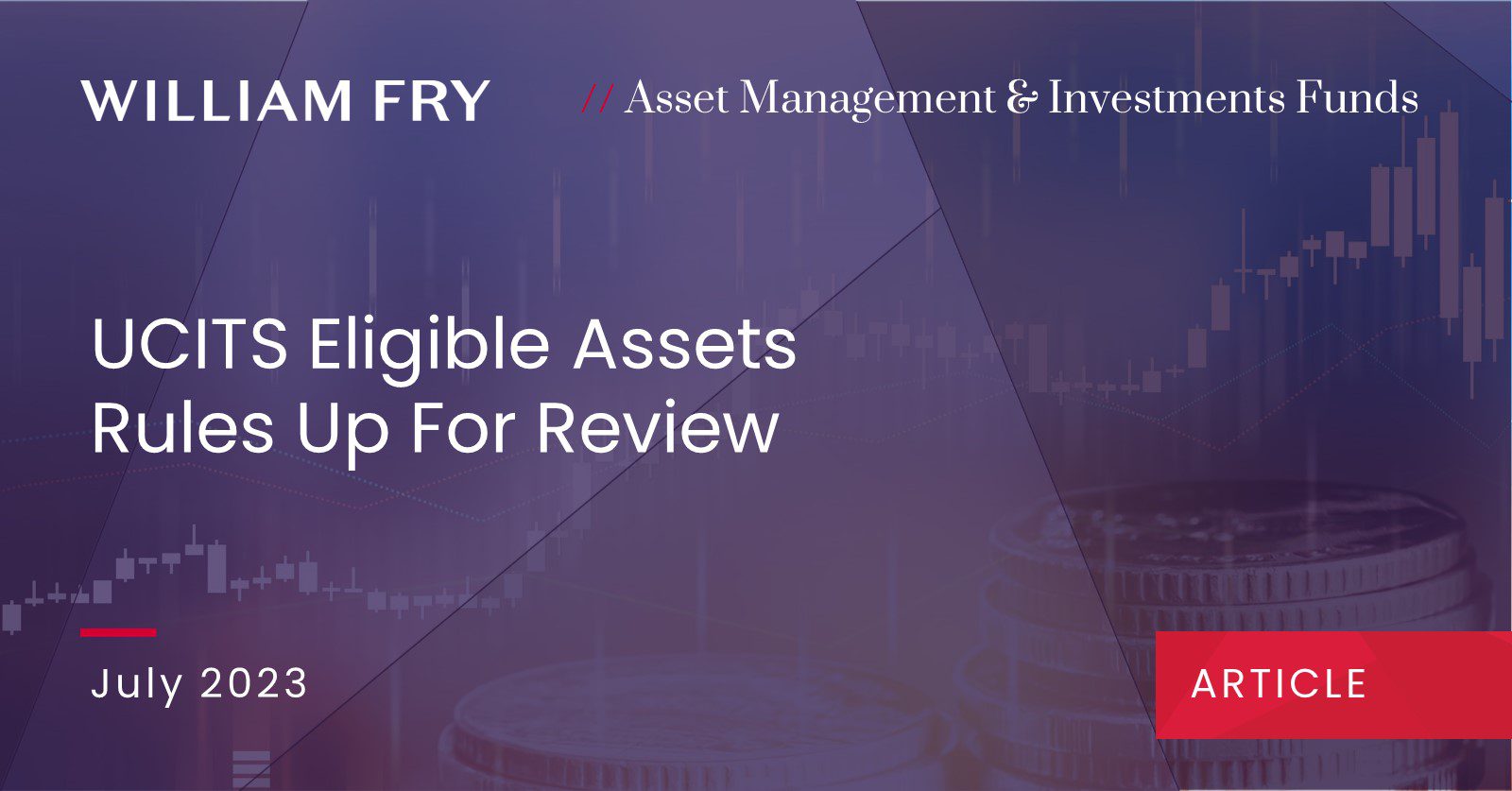The Commission is planning a wide-ranging review of UCITS rules governing eligible investments as set out under the UCITS Eligible Assets Directive (the EAD).
To support its review, the Commission has tasked ESMA with the provision of technical advice, including recommendations for legislative amendments, by 31 October 2024. It is likely that ESMA will engage with industry prior to issuing that advice to the Commission, whether to garner industry feedback on proposed amendments and/or gather data to inform the review. A call for evidence and/or consultation may be expected later this year or early next year from ESMA.
Once ESMA’s advice has issued, the Commission intends carrying out a ‘comprehensive public consultation’, most likely in Q4 2024/early 2025, ahead of finalising any EAD amendments.
This is very much the start of the process and, taking account of the above, industry is likely to have at least two opportunities to feedback on any proposals to amend the EAD.
Current scope of EAD review
As part of its request to ESMA, the Commission outlined the following areas for review, which may give rise to EAD amendments or new UCITS Level 2 measures:
- divergence between UCITS rules and other relevant EU frameworks and possible solutions to enhance consistency including by linking definitions and concepts with those under other legislation e.g., MiFID II, EMIR, the Benchmark Regulation or MMFR;
- criteria for the assessment of eligible assets including the presumption of liquidity for transferable securities;
- risks and benefits of UCITS’ exposure to ineligible assets e.g., through delta-one instruments, (embedded) derivatives and financial indices;
- efficient portfolio management techniques and legislative clarifications necessary to address findings from the 2018 ESMA peer review on the Guidelines on ETFs and other UCITS issues and the 2021 CSA on costs and fees; and
- assets which may give risk for retail investors e.g., structured/leveraged loans, catastrophe bonds, emission allowances, commodities, crypto assets, unlisted equities, and other relevant asset classes. The review will cover the absolute and relative size of UCITS’ exposures to such asset classes and their appropriateness, taking account of underlying market characteristics e.g., availability of valuation, liquidity, safekeeping etc.
Contact Us
If you have any queries on the issues discussed in this article, please get in touch with the key contacts, any member of the Asset Management & Investment Funds team or your usual William Fry contact.
Recommended Insights












